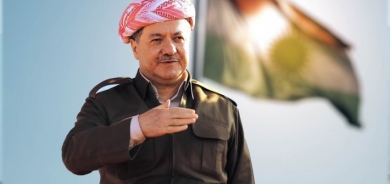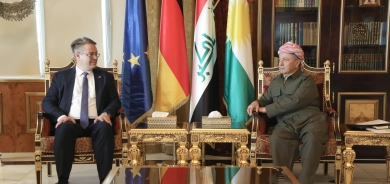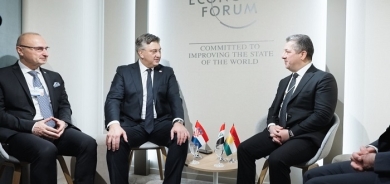THE SUNNI-SHIA STRUGGLE HAS BECOME THE NEW NUMBER ONE MIDDLE EAST PROBLEM

However, the Sunni-Shia struggle that dates almost from the beginning of Islam seems only to have ripened with time and now has replaced the Israeli-Palestinian struggle as the Number One problem in the fractious Middle East. How did this happen? After all it has been more than a decade since academics and practitioners warned about the Shia arc of instability stretching from Beirut to Tehran in the Middle East. In 2006, Vali Nasr also brilliantly explained in his must-read The Shia Revival: How Conflicts within Islam Will Shape the Future what was in store.
When the Sunni-Shia conflict did not follow immediately after his Casandra-like warning, however, the West, which is so used to doing things now, quickly dismissed his admonitions as misleading. As one US government official explained to me when I extolled the merits of Nasr’s insights, no such struggle has yet broken out. The Middle East, however, keeps time by devices different and much more patient than the West, and now the Sunni-Shia conflict has erupted and is atavistically challenging modern state borders in the name of each Islamic group’s vision of what the Islamic umma (community) should be.
For example, although there are many other factors operating to explain the Syrian civil war that has drawn in much of the rest of the region as well as the great powers like the United States and Russia, the Sunni-Shia split is the main catalyst driving events and increasingly creating porous borders that supposedly separate Turkey, Iraq, Syria, and Lebanon, artificial state borders established by the Sykes-Picot Agreement during World War I.
Thus Bashar al-Assad’s minority Alawite regime, an off-shoot of Shiism, is supported by Shia Iran and Shia Hezbollah in Lebanon, while the largely Syrian Sunni opposition consists of various Sunni groups including those affiliated with al-Qaeda as well as support from Sunni Saudi Arabia, Qatar, and Turkey. Of course, the newly empowered Kurds whose stunted sense of nationalism denied them a state after World War I are also driving events. Yet even the Kurdish ethnic factor has an important Sunni element to it as the Sunni Kurds in Iraq and Syria oppose the Alawite (Shia) Assad regime, while the newly established Shia Arab Iraq supports Assad.
In retrospect, the U.S. overthrow of Saddam Hussein’s Sunni regime in Iraq in 2003 and establishment of a Shia-ruled Iraq is probably the single most important factor that has ignited the current Sunni-Shia conflict. This seminal event laid down the gauntlet to the Sunni majority that the long feared and despised Shia minority was now rising to challenge for Islam’s leadership, a process that the Ayatollah Ruhollah Khomeini’s Shia revolution in Iran in 1979 commenced.
Although the Sunnis probably constitute 85 per cent and the Shia only 15 percent of Islam’s population, there are roughly as many Shias as there are Sunnis in the Islamic heartland that runs from Lebanon to Pakistan. In addition, the Shia sit on top of some of the richest oil fields in the region, and around the economically and geostrategically sensitive rim of the Persian (Arabic) Gulf number as much as 80 percent of the population. All this might not mean much if it were not for the age-old antagonism the two Islamic groups hold for each other.
What explains this mutual Sunni-Shia fear and hatred? To many Sunnis, the Shia’s emotional veneration of Ali and his martyred son Hussein border on heresy and even apostasy because it seems to deny Islam’s main tenet that “There is no god but God and Mohammed is his Prophet.” Indeed, the Sharia or traditional Islamic law justifies death for an apostate, while mandating protection for non-Muslims such as Christians or Jews who submit to Islamic rule. On the other hand, the Shia look upon themselves as eternal victims and martyrs oppressed and murdered since Islam’s earliest days when Ali, Mohammed son-in-law and the fourth caliph or successor, was first assassinated and then later his son Hussein martyred by the Sunni Caliph Yazid at the Battle of Karbala in 680. When a political civil war is compounded by such a strong religious dimension, tolerance can almost be impossible. Indeed over the Islamic centuries, the Sunni-Shia differences have become not only theological, but also political and even cultural and anthropological.
Of course, this is not to deny that the newly empowered Kurds have also become yet another major factor in the Middle East equation. The U.S. destruction of Saddam Hussein also allowed the Iraqi Kurds to become virtually independent as the Kurdistan Regional Government (KRG), the first proto-Kurdish state in modern times and a powerful model for other Kurds in Turkey, Syria, and even Iran. Thus there is a formidable new sense of Kurdish nationalism further empowered by its surrounding enemies in Turkey, Iraq, Iran, and Syria no longer united in opposition as in the past they always were. Indeed, there is now a virtual Turkish-KRG alliance fueled by Turkey’s need for Kurdish oil and facilitated by a common Sunni bond between Turkey and the Kurds opposed to now Shia-dominated Iraq.
All of this is not to deny the continuing importance of Middle Eastern oil and the struggles it induces. In addition, the problems of the Arab Spring demands for grass roots democracy and economic fairness for the common Arab population has now segued into a military reaction in states such as Egypt, while anarchy bids fair to follow Qaddafi’s demise in Libya. The Iranian nuclear program and the fear it arouses in the West as well as the sudden instability in Turkey, first with the Gezi demonstrations last June and now the swirling corruption charges against the Erdogan AKP government that has been in power since November 2002 constitute yet more problems for the Middle East. Finally the Al-Qaeda terrorism problem, far from diminishing with the death of Osama bin-Laden, has suddenly metastasized in Iraq and even more in Syria.
Despite all these major problems and their resulting struggles, the renewed Sunni-Shia struggle has now clearly become the new Number One problem in the Middle East and probably helps explain more of that region’s problems and wars than any other factor. This development will allow Israel a certain amount of respite in the seemingly endless quagmire of Middle Eastern politics, but also will demand new responses and vision.
Michael M. Gunter is a professor of political science at Tennessee Technological University in Cookeville, Tennessee and the author of the forthcoming Out of Nowhere: The Kurds of Syria in Peace and War (London: Hurst and Company, 2014).

 Michael Gunter
Michael Gunter











